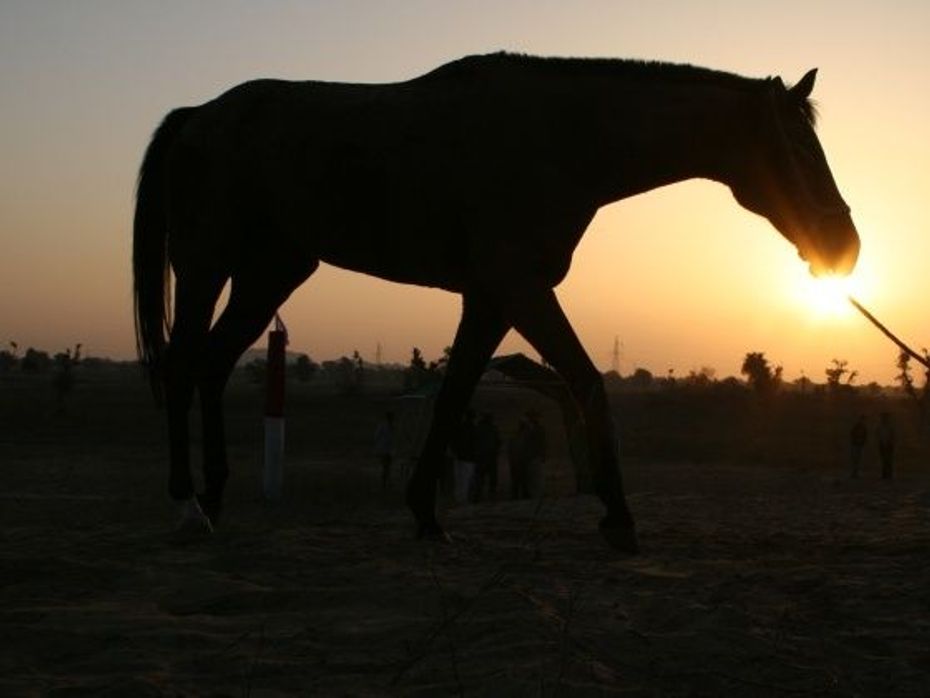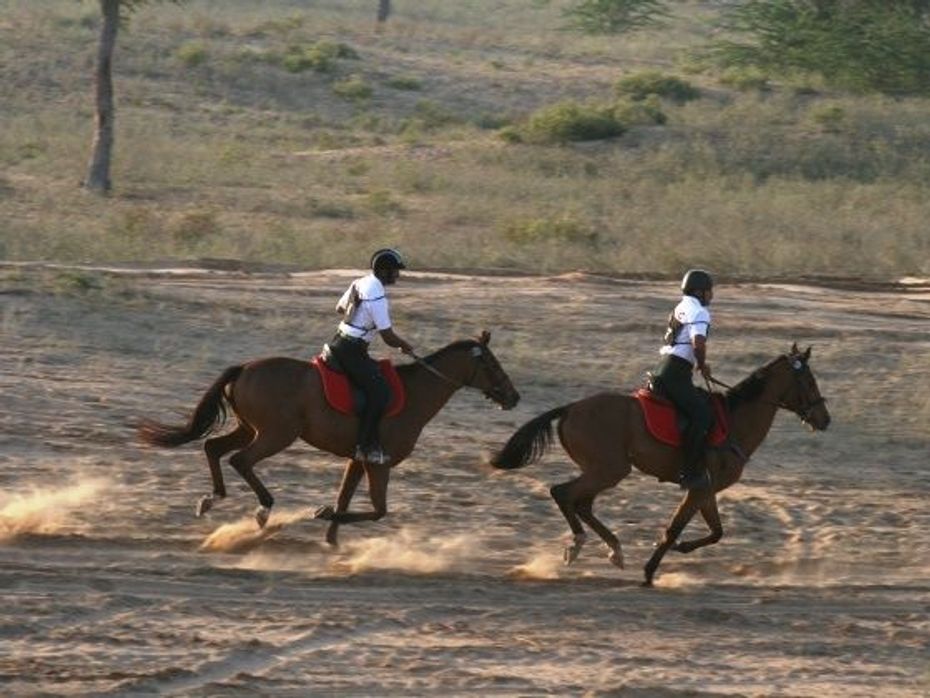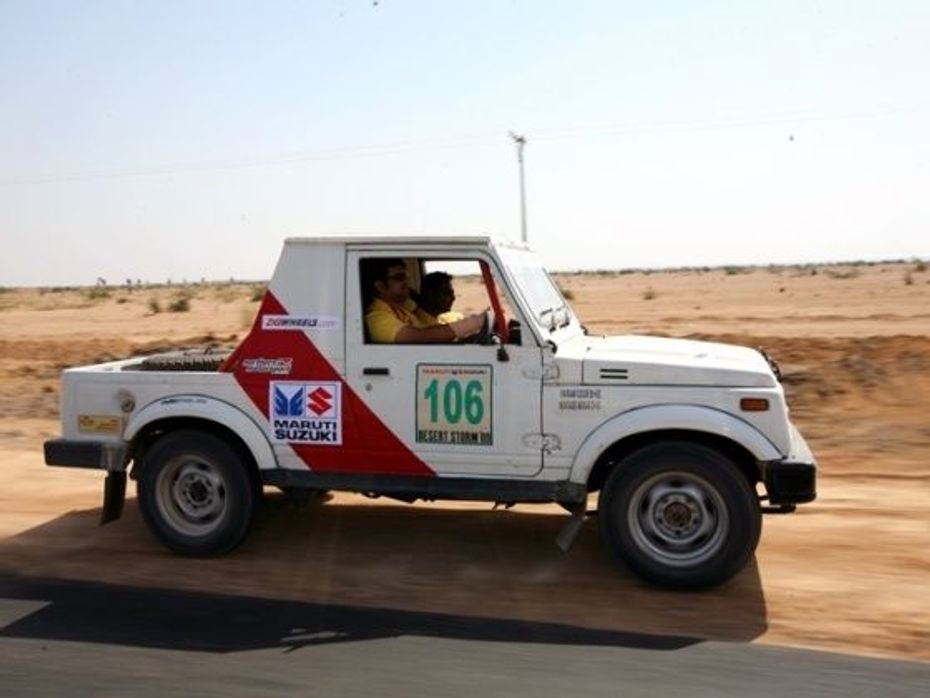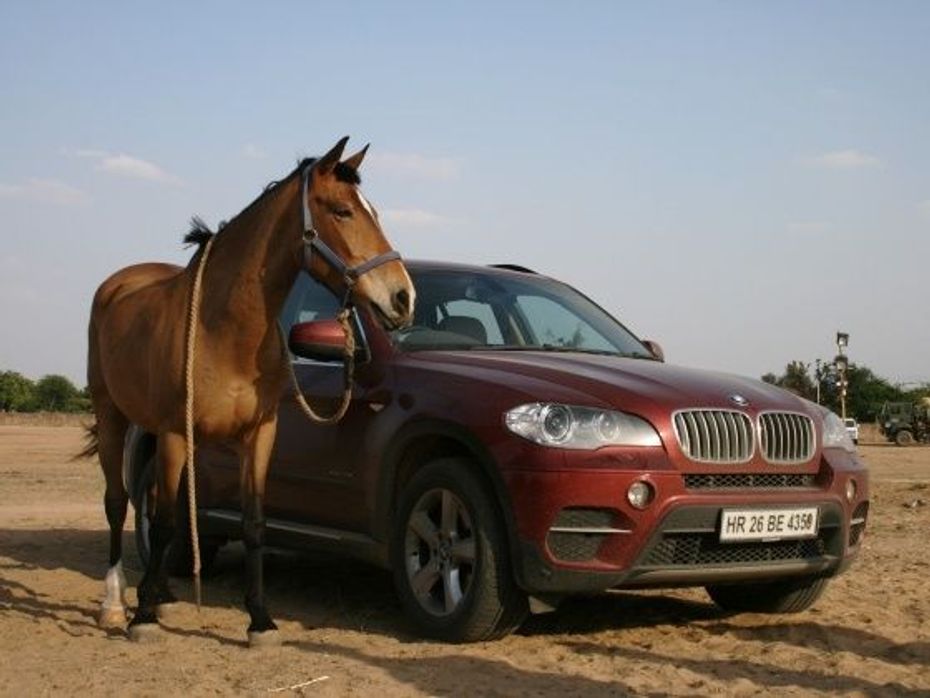
BMW Unveils All-new X5 And It’s Bigger Than Ever!
- Jun 6, 2018
- Views : 1806


A 10 hour drive knocking off close to 600 kilometers between Delhi and Jodhpur was carried out without the slightest bit of fatigue setting in thanks to the powerful and rather comfortable BMW X5 at my disposal. The 245 odd horses under the hood mated to an 8 speed automatic gearbox made for a very fast yet relaxing ride, which I personally felt was a boon as I was on a tight schedule and didn’t have time to take on some down time to sort out a tired body.
Long drives are about endurance, not just of the vehicle but for the driver themselves and a similar ride in an uncomfortable, badly maintained vehicle would have been a horrendous experience. I was going to learn a lot more about endurance in the days to come, however at the moment I had made it to my destination without a hitch and now that I was at Jhalamand Garh, a quaint heritage haveli on the outskirts of Jodhpur, I intended on soaking in a brilliant weekend under the desert sun.
Alright, I did have another motive to be here other than a 'holiday-on-duty' so to speak, and that was to get down to the basics of horse power by being a guest at the National Horse Endurance Riding Championship, an annual event that pits the endurance of horse and the rider against the elements as well as a true test of understanding one’s horse and how to respond to it. As I was to learn over the duration of the event, this endurance ride would prove to be amazingly similar to any world class motor sport event in more ways than one!
A good night's rest and an early start to reach the dunes on the outskirts of Jodhpur to witness the start of the championship began on a rather education note. "A horse can keep running until it literally dies from a heart attack." These were the first words uttered to me about the National Horse Endurance Riding Championship, and these words also hold the key to the nature of the event.

An endurance ride is not a test of speed, but as it states, it is a measure of endurance of both the rider and the horse. The event is conducted on a closed circuit of twenty kilometers and different levels of competition include a 20, 40, 60, 80, 100 and 120 kilometer endurance ride. A day prior to the event, all the horses are scrutinized for their heartbeat, gait (walk and trot), blood tests are taken to check for doping, and it is only after a horse clears scrutiny that it can compete.
The run itself is a well marked trail. Each team has to complete the desired distance in the best possible time, while keeping a check on the horse and insuring that it isn’t being overworked. After every 20 kilometers, the rider must bring the horse in for scrutiny yet again (a 20 km run means that the riders end with the scrutiny session, a 40 km run means the riders come in get scrutinized after 20 km, then head out again, and so forth for the other distances as well, with a check up every 20 kilometers). Once a horse crosses the finish line, the rider has 20 minutes to calm it down, and have it sent to the scrutiny bay. The horses are usually washed down with ice water, massaged, allowed to role in the sand and then gently walked around in order to bring their heart rate down. Once in the scrutiny bay, the horse should be calm, have a heartbeat of less than 64 beats a second and should not show any other signs of fatigue. Incidentally, once a horse is flagged off, it is on the clock, including the down time to calm the horse as well as scrutiny time. The clock stops only when a horse has passed scrutiny for the final time depending on the level it has been competing in. The reason for these elaborate and consecutive checks lies in the fact that a horse will indeed ride till its death. Its adrenaline gets pumping and it can succumb from a heart attack if it is pushed to the limit.
The route itself isn't very tough and is largely a plain track through shrubbery and sand. Teams can ride together and pace themselves accordingly. The route is well marked and at set locations there are a number of time controls that also offer water and a chance to cool off the horses en route.
As far as winners are concerned, the top three timings from each team are taken. The team to do the ride in the least possible time wins. Of course this also means that their horse passes scrutiny.

Having spent two days witnessing the Endurance Ride, I was amazed at the horses as well as the riders for being able to be one with their beast. In a true tribute to horsepower and sportsmanship, this ride indeed has its similarities with any endurance rally, for example the likes of the Desert Storm or the Raid de Himalaya. People show up with their vehicle of choice; however these rallies are dominated by the Maruti Gypsy. In a similar situation, the horse Endurance Run is dominated by the Marwari breed, an Indian horse that used to be a war horse and is now finding an increasing popularity as an endurance steed comparable to the Arabian. Further to this is the entire scrutiny set up, which again is mimicked by motor sport officials who check to make sure a vehicle is rally worthy, both pre event and post event scrutiny is a must in both events.
What had the deepest impact, however, was the aspect of endurance. Keeping the horse in fine condition is much like keeping your vehicle in proper condition to take on the next leg of the rally. If you push your horse, it can die, and in the same vein, if you push your vehicle to hard, it can fall apart on an endurance rally. The rider must understand the horse at each and every moment and a driver must be in tune with his or her vehicle at any given moment. The ability to match these tasks and complete the circuit in the best possible timing is what both sports eventually aim at. Both depict the truest sense of horsepower, while one is a little more literal translation!

With the desert sun setting on the Jodhpur horizon, and bidding farewell to my host and friend Thakur Raghuvendra Pratap Singh of Jhalamand Garh, who not only educated me on horses, endurance runs and the Marwari breed, but also provided me with some of the most scrumptious Rajasthani meals ever and a brilliant stay at the Jhalamand Garh Heritage Haveli, I finally was ready to take on the last leg of my personal endurance drive; my journey back home. Armed with new found respect for horses and horse power, I captained the BMW X5, my trusty steed, back to Delhi while being humbled by the thought about how horsepower has come a long way, yet the synergy between the beast and machine is still entwined in a story that is has been built upon over the last 100 years.

BMW Unveils All-new X5 And It’s Bigger Than Ever!

Next-Gen BMW X5 To Debut In 2018

BMW Launches X3 and X5 Petrol Variants In India

Launch Alert: BMW launches the X5 with an M Sport variant

BMW X5M and X6M launched at Rs 1.55 Crore and Rs 1.60 Crore

BMW X5M and X6M launch on October 15

BMW X5M and X6M coming to India soon

BMW X5M and X6M to be launched in India

BMW teases X5 M and X6 M

Bajaj Pulsar NS400 Teased For The First Time Ahead Of May 3 Launch
India's largest automotive community